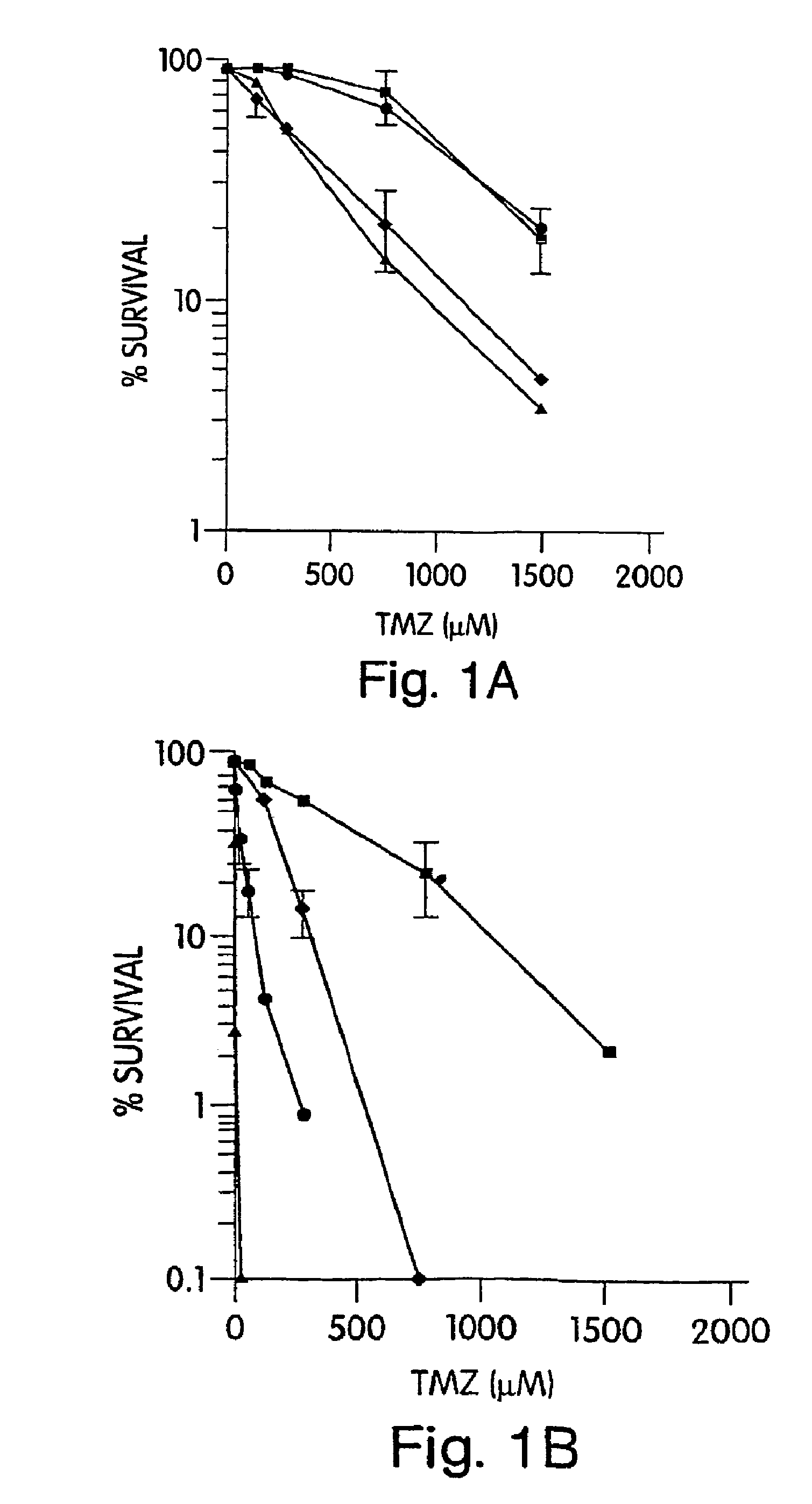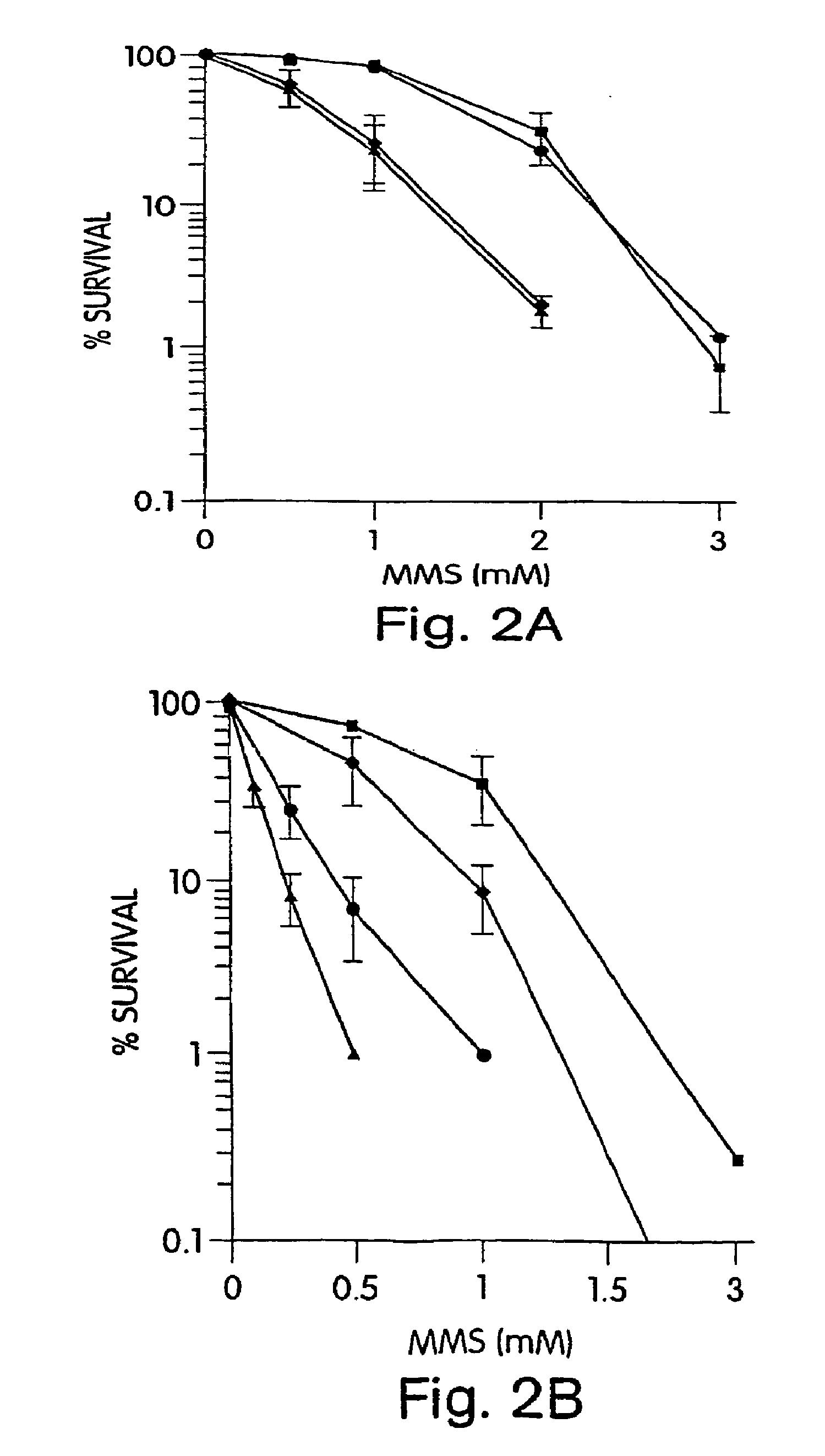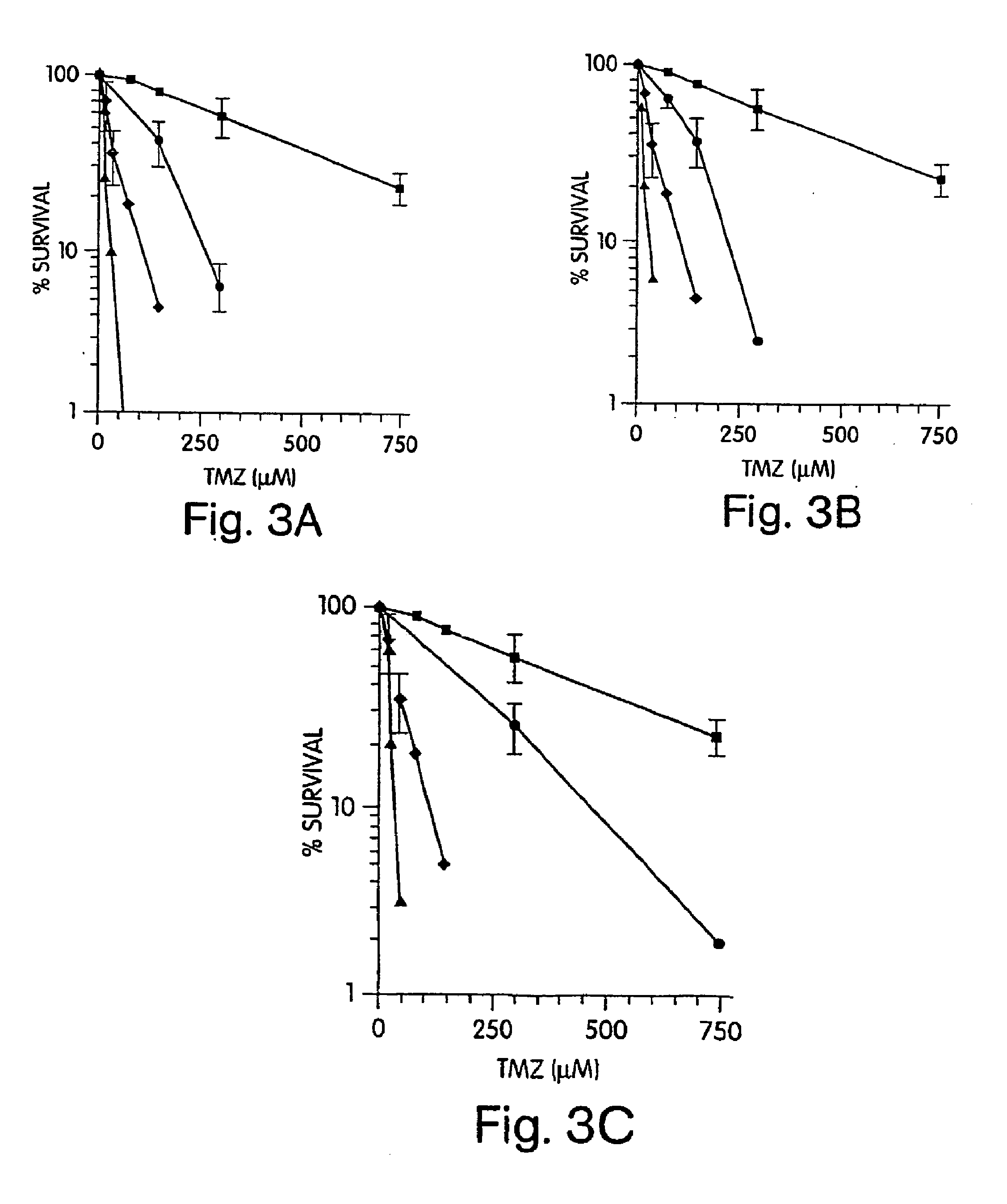Alkylating agent combinations in the treatment of cancer
a technology of alkylating agent and cancer, which is applied in the field of cancer treatment compositions and methods, can solve the problems of chemotherapeutic agents being toxic to patients, cancer is a worldwide problem, and cell death via apoptosis, so as to augment the ability of temozolomide, and enhance the ability of anticancer agents.
- Summary
- Abstract
- Description
- Claims
- Application Information
AI Technical Summary
Benefits of technology
Problems solved by technology
Method used
Image
Examples
example 1
Methoxyamine Potentiates Cytotoxicity of TMZ
[0148]We have previously reported the comparative cytotoxicity of TMZ and BG in the SW480 and HCT116 cells lines (Liu et al. “Mismatch repair mutations override alkyltransferase in conferring resistance to temozolomide but not to 1,3-bis(2-chloroethyl)nitrosourea”Cancer Res. 56: 5375-5379, 1996). In order to test whether MX would alter TMZ cytotoxicity, we treated SW480 and HCT116 with 6 mM MX (itself a nontoxic concentration) plus TMZ (0-1500 μM) for 2 hr, with or without BG to abolish AGT mediated removal of O6mG DNA adducts. SW480 cells were moderately resistant to TMZ, with an IC50 of 395 μM which was reduced 14-fold to 28 μM by BG pretreatment. Greater resistance to TMZ was observed in MH1 defective cells, even after inhibition of AGT by BG (IC50, 950 μM). In both cell lines, MX potentiated the cytotoxic effect of TMZ with a DMF of 2.4 in SW480 and 3.1 in HCT116 (FIG. 1). In SW480 cells, additive-effects of MX and BG were noted (IC50 ...
example 2
Inhibitors of PARP Modulate the Sensitivity of Cells to TMZ
[0150]Since inhibitors of PARP may interrupt BER and increase sensitivity to methylating agents, we examined whether inhibitors of PARP sensitize cells to TMZ. FIG. 3a and FIG. 4a ((▪), TMZ alone; (♦), BG plus TMZ; (), PD128763 plus TMZ; (▴), BG and TMZ plus PD128763) display survival after combined treatment of TMZ with PD128763, 3-AB or 6-AN in both SW480 and HCT116 cells. In the SW480 cell line, PD128763 sensitized cells to TMZ with a DMF of 3.3-fold. The combination of PD128763, BG, and TMZ was even more toxic, with a DMF compared to TMZ alone of 36-fold. In HCT116 cells, the DMF for PD128763 and TMZ compared to TMZ alone was 5.0. However, the combination of PD128763, BG and TMZ had no greater effect than PD128763 and TMZ, indicating that persistent O6mG had no effect on cytotoxicity in this MMR defective cell line. Potentiation of TMZ cytotoxicity was also observed in both cell lines treated with two other PARP inhibit...
example 3
Synergistic Interaction Between TMZ and MX or PD128763
[0151]We investigated the nature of the reaction between TMZ and MX in the TMZ-resistant cell line, HCT116. These cells were incubated in the presence of a range of concentrations of TMZ (75-750 μM), of MX (1.5-15.0 mM), or constant molar ratio mixture of TMZ and MX (1:20) for 2 hr. HCT116 cells were also exposed to TMZ and PD128763 (62.5-625 μM) alone and to a combination of (1:0.83) for 2 hr to analyze synergism. As shown in FIGS. 5A and 5B, synergistic interaction (CI<<1, p<0.001) was found in both SW480 cells and HCT116 cells using the combination of TMZ with either MX or PD 128763. These results also showed a marked synergism at high Fa values. Since MDF for these combinations was similar to the observed with SW480 cells, we conclude that BER inhibitor synergizes methylating agent cytotoxicity in both MMR deficient and proficient colon cancer cells.
PUM
| Property | Measurement | Unit |
|---|---|---|
| pH | aaaaa | aaaaa |
| pH | aaaaa | aaaaa |
| pH | aaaaa | aaaaa |
Abstract
Description
Claims
Application Information
 Login to View More
Login to View More - R&D
- Intellectual Property
- Life Sciences
- Materials
- Tech Scout
- Unparalleled Data Quality
- Higher Quality Content
- 60% Fewer Hallucinations
Browse by: Latest US Patents, China's latest patents, Technical Efficacy Thesaurus, Application Domain, Technology Topic, Popular Technical Reports.
© 2025 PatSnap. All rights reserved.Legal|Privacy policy|Modern Slavery Act Transparency Statement|Sitemap|About US| Contact US: help@patsnap.com



